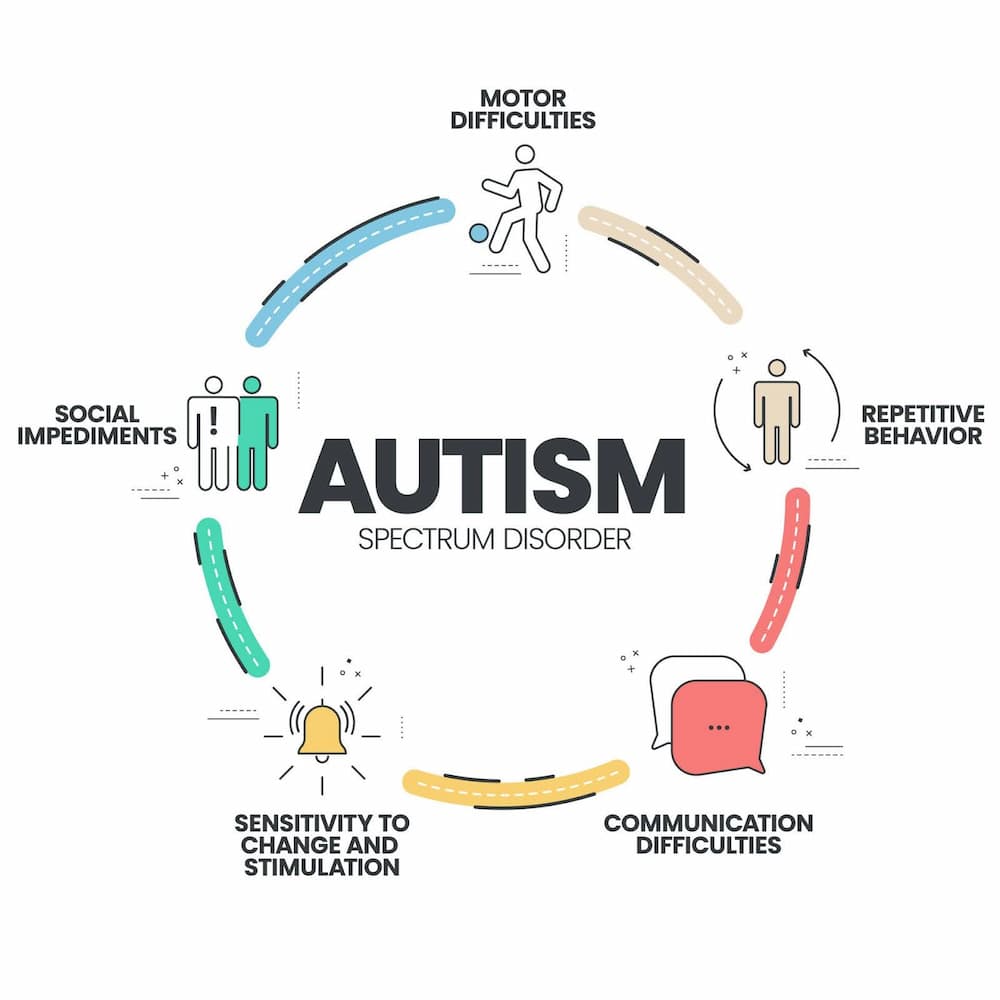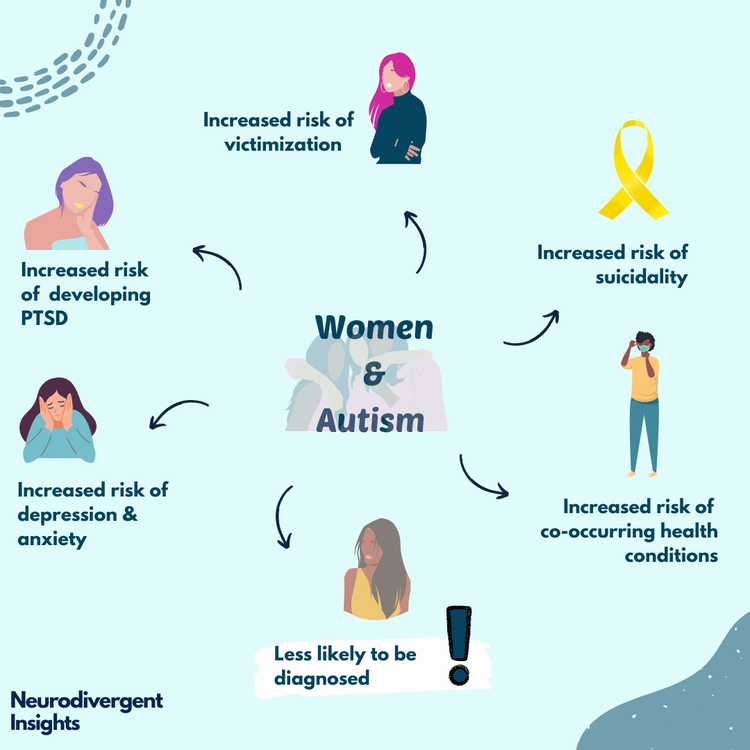The Relevance of Household Assistance in the Journey with Autism
The Relevance of Household Assistance in the Journey with Autism
Blog Article
Exploring Autism: Methods for Effective Communication and Interaction
Effective interaction and communication with individuals on the autism spectrum necessitate a detailed understanding of their unique requirements and preferences. Methods such as utilizing clear language, making use of aesthetic supports, and cultivating consistent regimens can significantly enhance engagement and decrease anxiety. Moreover, identifying the relevance of non-verbal cues and shared rate of interests leads the way for meaningful connections. However, the details of these methods reveal additional factors to consider that merit exploration, specifically in how they can be adjusted to varied contexts and specific experiences. What might these adaptations look like in technique?
Understanding Autism Range Problem
Autism Range Problem (ASD) incorporates a variety of neurodevelopmental conditions characterized by obstacles in social communication, interaction, and recurring actions. The term "spectrum" shows the varied manifestations and differing levels of intensity experienced by individuals with ASD. While some might exhibit significant problems, others might present high-functioning characteristics, permitting greater self-reliance in everyday life.
The onset of ASD usually occurs in very early childhood, with indicators commonly recognizable by age 2. Early indications might include postponed speech growth, limited eye get in touch with, and difficulties in recognizing social hints. Although the precise etiology of ASD continues to be uncertain, study suggests a mix of genetic and ecological variables plays a critical duty in its development.
People with ASD typically have special strengths, such as heightened interest to information and extraordinary memory abilities. They might have a hard time with recognizing abstract concepts and managing changes to routine - autism. Because of this, treatments and support tailored to specific needs are essential for fostering communication and social abilities. Acknowledging the intricacy of ASD is important for advertising awareness, approval, and efficient methods that assist in significant communications with people on the range.

Relevance of Clear Communication
Efficient interaction is crucial for promoting understanding and connection, specifically for individuals with Autism Range Condition (ASD) Clear communication not just assists in social interactions however likewise enhances the individual's capability to express their requirements, emotions, and ideas. For people with ASD, the subtleties of language can often be testing; therefore, utilizing uncomplicated and unambiguous language is vital.
Furthermore, clear interaction assists decrease frustration and anxiety that may occur from misconceptions. When messages are conveyed in a direct and consistent way, people with ASD are better outfitted to translate details accurately, which can significantly boost their social involvement and engagement in numerous settings.
Establishing regimens and making use of aesthetic supports can further reinforce clear communication. These strategies give people with predictable frameworks that aid comprehension and retention of details. Furthermore, actively being and listening person throughout interactions promotes a helpful setting where individuals with ASD really feel valued and recognized.
Eventually, prioritizing clear interaction not only empowers individuals with ASD yet additionally fosters even more meaningful links with their peers, caretakers, and the wider neighborhood, leading the way for comprehensive interactions and collective relationships. - autism
Non-Verbal Communication Strategies
Communication prolongs past words, and for people with Autism Range Condition (ASD), non-verbal signs play a considerable role in interactions. Non-verbal interaction techniques can include face expressions, gestures, body language, and eye get in touch with, every one of which act as essential elements for communicating objectives and feelings.
Comprehending and interpreting these non-verbal signals can boost communications with individuals with ASD. A cozy smile or open position can develop an inviting click now ambience, urging interaction. Using visual help-- such as photo cards or signs-- can bridge interaction spaces and assist convey messages extra effectively.
It is likewise important to be mindful of individual room, as people with ASD may discover this info here have different convenience degrees pertaining to distance. Observing their reactions to physical distance can educate suitable changes.

Developing Helpful Atmospheres
Creating a helpful setting is important for promoting positive communications and boosting the wellness of people with Autism Range Disorder (ASD) Such environments can dramatically reduce anxiety and create a sense of safety, permitting individuals to reveal themselves much more freely.
To accomplish this, it is vital to think about sensory sensitivities that individuals with ASD might experience. Customizing the physical area to consist of soft lights, marginal background sound, and comfy seats can create a relaxing ambience. In addition, using constant regimens and clear visual routines can help individuals expect shifts and reduce unpredictability, additional promoting comfort.
Social spaces need to be structured to lessen frustrating our website stimulations while offering chances for interaction in recommended tasks. Helping with areas designated for peaceful time can additionally act as a sanctuary throughout minutes of stress and anxiety. Importantly, integrating components of choice empowers people, enabling them to work out agency in their setting.

Motivating Social Interactions
Fostering social interactions among individuals with Autism Range Problem (ASD) requires deliberate strategies that focus on convenience and interaction. Establishing predictable regimens can aid lower anxiety, making social settings a lot more friendly. Creating structured settings with defined roles and obligations permits individuals to involve without the frustrating stress of disorganized social dynamics.
Incorporating passions and staminas right into social activities can work as a stimulant for interaction. As an example, organizing team tasks around shared pastimes or subjects of attraction can help with natural discussions and connections. In addition, utilizing visual supports, such as photographic routines or social scripts, can help in comprehending social hints and assumptions.
Designing suitable social habits is crucial - autism. Peers and adults should show effective interaction techniques, consisting of energetic listening and turn-taking. Role-playing scenarios can additionally offer a risk-free space for individuals to practice these abilities
Lastly, fostering peer relationships via inclusive techniques is vital. Motivating inclusive playdates or group getaways can develop possibilities for socialization in a comfy setup. By applying these instructors, caregivers and techniques can significantly enhance social interactions for individuals with ASD, advertising their total social growth and well-being.
Conclusion
In conclusion, reliable interaction and interaction strategies are necessary for sustaining individuals with Autism Range Condition. Inevitably, these methods equip individuals with autism to navigate social landscapes, advertising their total health and making it possible for the advancement of long-term relationships.
Effective interaction and interaction with people on the autism spectrum require an extensive understanding of their unique demands and preferences. Clear interaction not just helps with social interactions however likewise boosts the person's capacity to share their needs, feelings, and thoughts.Cultivating social communications among individuals with Autism Spectrum Disorder (ASD) calls for deliberate approaches that focus on convenience and interaction. By executing these approaches, educators and caretakers can substantially enhance social interactions for individuals with ASD, promoting their total social development and well-being.
In conclusion, effective communication and communication approaches are essential for supporting people with Autism Range Problem.
Report this page